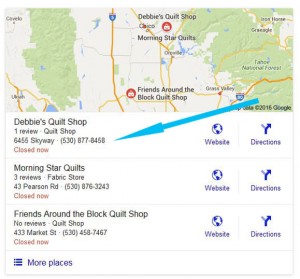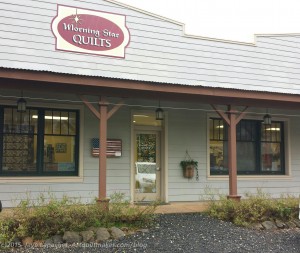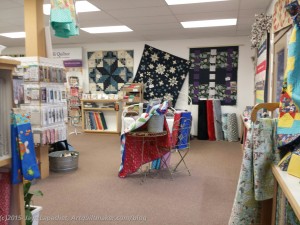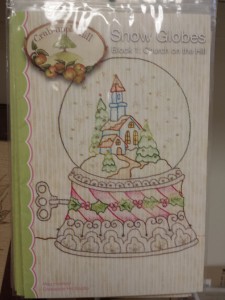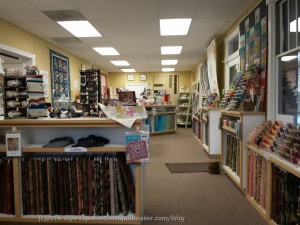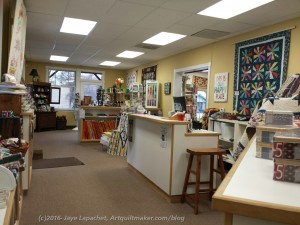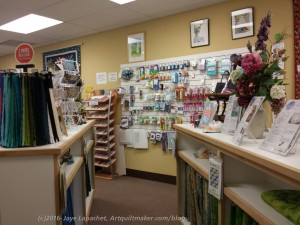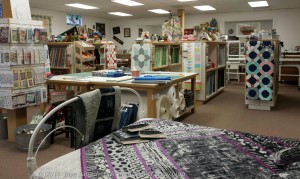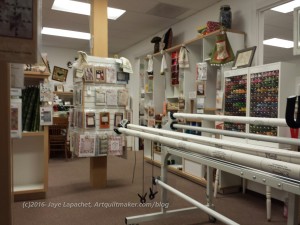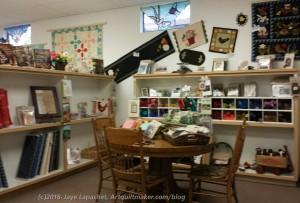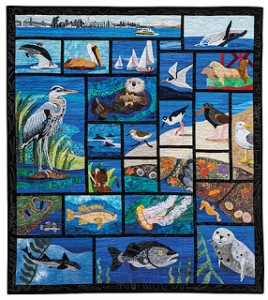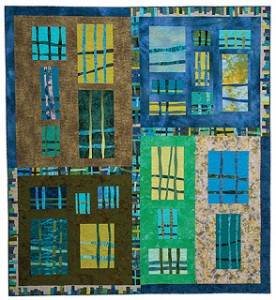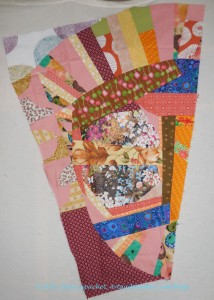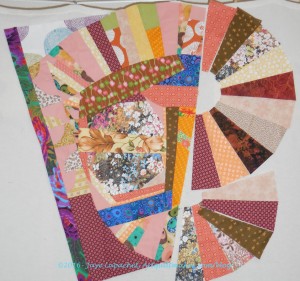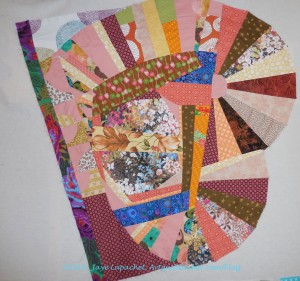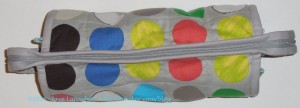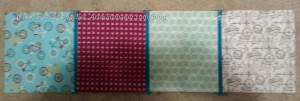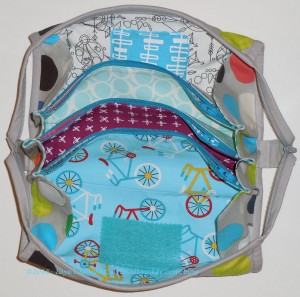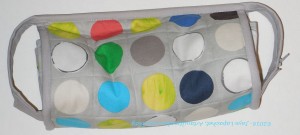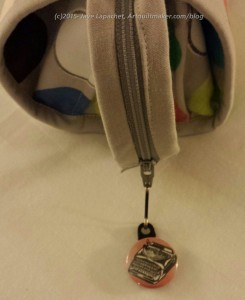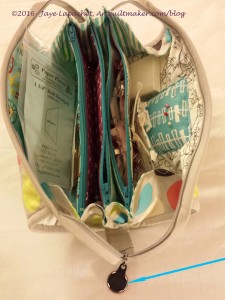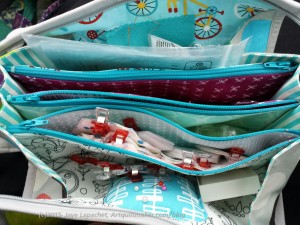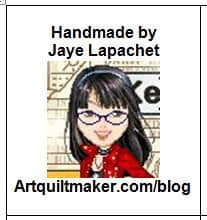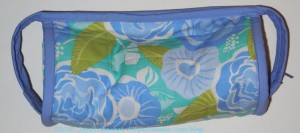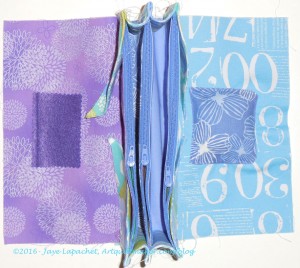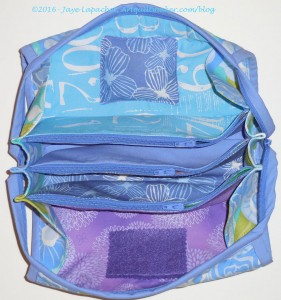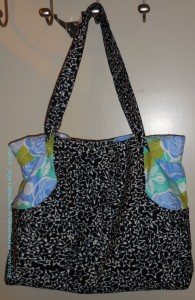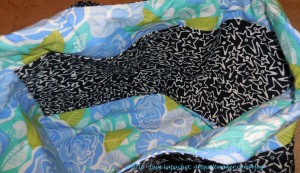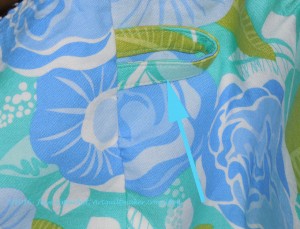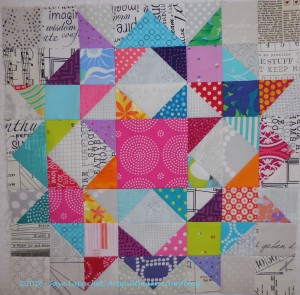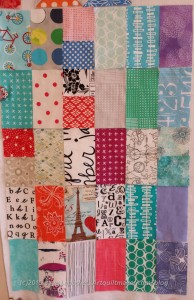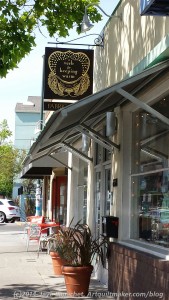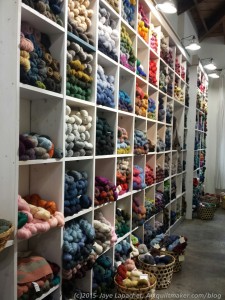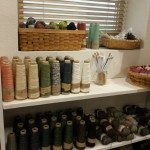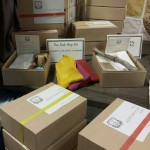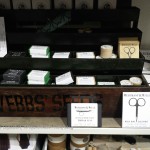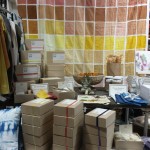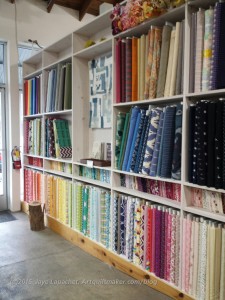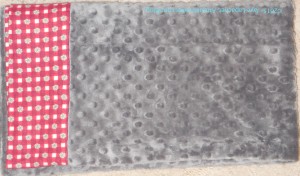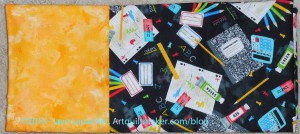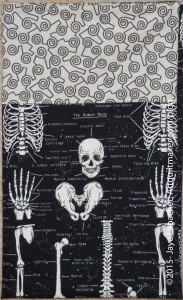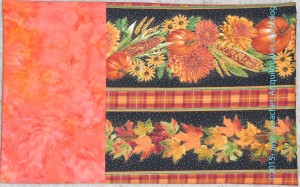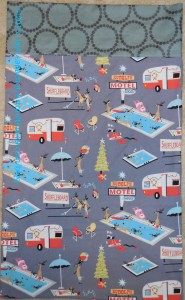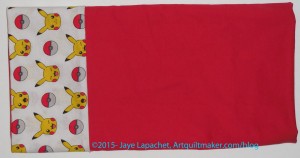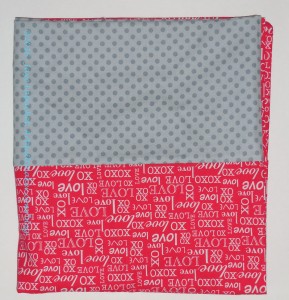 Adding Layers Color, Design & Imagination: 15 Original Quilt Projects from Kathy Doughty of Material Obsession by Kathy Doughty
Adding Layers Color, Design & Imagination: 15 Original Quilt Projects from Kathy Doughty of Material Obsession by Kathy Doughty
I sought out this book after I saw a quilt, which referenced the book at the Tuleberg Quilt Show and after I saw Gerre bring her fantastic quilt to show and tell at a recent BAMQG meeting. I have Material Obsession in my library, but it hasn’t filtered to the top of the stack for a review yet.
As I was preparing to write this review I was thinking about what attracted me to Doughty’s style. I am really interested in the layering of color, design motifs, e.g. quilting, embroidery, embellishment, and the juxtaposition (almost clashing) of fabric/color motifs in quilts. You know how Kaffe Fassett has a riot of fabric prints in his quilts that somehow seem to work? That is what I mean.
You can see some of my experiments in this area in the Red and Black Improv quilt, but looking at Scrapitude Carnivale is what really made me think more about the successful combinations of different fabrics.
While this type of combination of fabrics and colors seems common today, Doughty curates her fabrics more carefully. She does not seem to be of the mind that more is better and the more you have the more will go together, unlike some other quilt teachers.
The book starts with an introduction, which says “The lives and voices of the makers are sewn into a composite piece of visual delight that evocatively joins color, technique, and style into a long lasting memory.”
This is only part of an introduction that is a delightful essay about making and some of the thoughts quilts evoke in people. It sets the tone for the book. After reading this, I had a dark thought that went back to my post on quilt labels, which was that unsigned/unattributed quilts break the connection of the maker to their quilt.
The intro is followed by a section on Kathy Doughty‘s quilt journey (pg.6). After giving a brief description of how she came to write the book, own a shop, etc, she reminds us that “just as important as the how of making the quilt is the why.” I think about the ‘why’ a lot and find that most quilt authors don’t discuss it very much, if at all.
The author brings the reader into the circle with the next section, “You and the Book” (pg.7). She says “simple fabric selections, basic patterns, and obvious designs gave way to more mature, thoughtful designs.” You have to walk before you can run. This section outlines how the author intended the book to be used. She encourages readers to use their stash.
Kathy Doughty suggests asking yourself “what do I want to say?” at the beginning of each quilt. This question stopped me. I almost never ask myself this I often start a project because I want to try a technique or teach myself a skill. I never think of infusing my quilts with a message or starting at a point with a message in mind. As I scroll through the quilts I have made in my mind, I know why I made most of them and only a couple of them have messages, or started with messages.
As with most quilt books, the intro sections cover the basics. A message about creativity (pg.8) is one that I would like to copy and put up on my inspiration board.
Doughty encourages readers to use our stash fabrics and gives some ways to think about your beloved fabrics.
All of the sections in the Tools of the Trade chapter are infused with Doughty’s creative and positive style. La de dah creativity is great, but good technique is important as well. Thus, I was pleased that she said “however, it is also important that the quilt lies flat, that the seams join, that lines of the design are distinguished, and that in the end the quilt is square – not to mention sewn together in a manner that will stand the test of time and wear.” (pg.11). I think that good technique gets short shrift a lot of the time, but I believe that it is amazingly important and am glad a well respected shop owner, author and designer like Doughty agrees.
I have never seen a section on Rulers and Templates (pg.12-13), but the author has one in this book. She is also the first person I have seen who recommends Creative Grids half and quarter square triangle rulers. In the photograph (pg.13), I see a few rulers that I have, but a number that I do not. In this section, Doughty’s reasoning and comments are included with the picture. The picture is followed with a Tips section, which describes techniques such as cutting strips (pg.14), cutting wedges from strips as well as from a wedge ruler (pg.15), and using the specialty rulers (pg.16-17). There are also a few pages on other tools (pg.18-19).
Finally, we get to Chapter 1! It is called “Working the Stash”. Doughty writes “The simple act of collecting is a favorite pastime for many of us. As a shop owner I have heard many stories about stashes. I am often left with a curious feeling: Why collect if it is never to be used?” I have no interest, cause or reason to judge why people buy fabric and whether they use it or not. If a quiltmaker collects fabric for the joy of collecting more power to her (or him!). Yards of fabric are no different than salt & pepper shakers or 50s style Pyrex baking dishes. We all collect something. Still, I am glad Ms. Doughty brought this up. When I buy fabric it is with the intention of using it. Whether I do or not is a different story, but my intent is to cut it up and put it in a quilt or bag. I have found that when I put ‘special’ fabrics into my quilt I enjoy them even more.
The author acknowledges that selecting fabrics for a quilt can be a challenge, but that it should be a fun process. Her tip is to find a link, an idea with which I agree. She points out that a stash that is not used starts to look dated. I have found this to be true as well. I have found that my tastes change if a fabric languishes or I am not interested in the project for which I bought the fabric after awhile.
She talks, in general, about scrap organization in this section as well.
Right after that one page chapter 😉 come a few projects related to the text of the chapter: stashes and scraps. Of these projects, I am quite fond of Vintage Spin (pg.22-27) . As I said, my friend Gerre made a version of this quilt and I loved her piece.
Each project has a short section oh how the author started, construction, assembly and how she finished. The directions are adequate, but only a few pages. I think a maker would do well to have a few quilts under his/her belt to make these quilts. Even a confident beginner could make some of the projects.
Chapter 2 is called “Working with Templates (pg.59). Kathy says that she loves to cut all kinds of shapes with templates, because they are efficient. Material Obsession has a line of templates for many of the projects in this book. These rotary cutting templates are featured throughout the book in the various photos. They are listed as optional in the book’s supply lists.
Big Wedding (pg.86-91) is my favorite pattern in this section, though I would use a different color palette.
“Working with Scale” is the title of Chapter 3 (pg.93). Modern quiltmakers love to blow up one block design to cover a whole quilt top. Doughty has done this, but in a fresh way.
She points out that making blocks really big means that you can use large print fabrics (like my man, Phil’s 😉 fabric lines!!!) to great effect. Why didn’t I think of this?? This is an excellent point, which goes beyond ‘making it modern’. My mind is zinging!
Kathy Doughty mentions “The puzzle in this process was how to maintain the feeling of tradition while exploring the blown-out size structure.” I think that is an important question, because no matter how hard we try 9 patches and Churn Dash blocks have been around for awhile and are considered classic blocks. The joy of quiltmaking, for me, is taking something and making it new and my own,which includes classic blocks.
I like most of the quilts in this section or had some feeling about each one. I really like Basket Case (pg.94-101). The name alone is worth the price of admission! The finished version of Lily Field (pg.102-109) was very appealing. The infinity look of the Mega Churn Dash (pg.110-115) was fun, but the fabrics were dull and uninspiring. I would have added something to the quilt as it looks like something is missing. Perhaps it would have been more appealing to me if the background had been mosaic pieced? The good thing about this quilt is that it would be a fast gift.
Super Nova (pg.116-121) may be my favorite quilt in this section. I am yearning to try it with some of my Philip Jacob prints!. I love Sawtooth Stars and the off center design offers a lot of movement. The different sizes of blocks also adds to the movement. The opportunity to use large scale prints might be too good to pass up. I bought a charcoal dot print recently that would be an excellent background for this quilt, so I am on my way! 😉
Star Man (pg.122-126) may be a good design for one of my nephews while not being boring to sew.
The last piece of the book is a relatively detailed bio of Kathy Doughty. This is followed by a packet of template pages in the back of the book.
I plan to buy this book and hope you will as well.
View all my reviews
